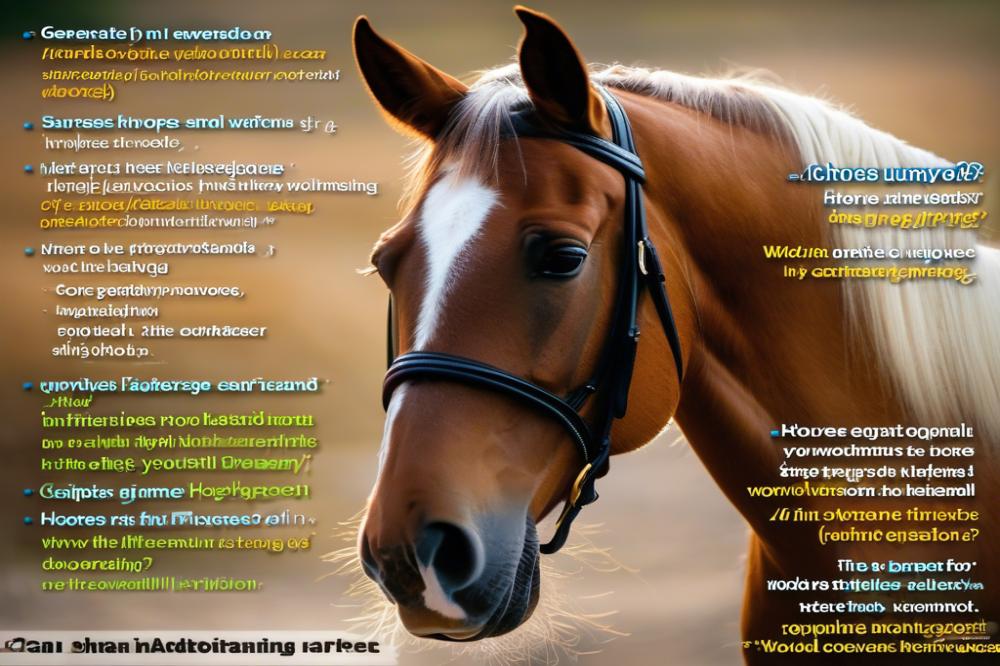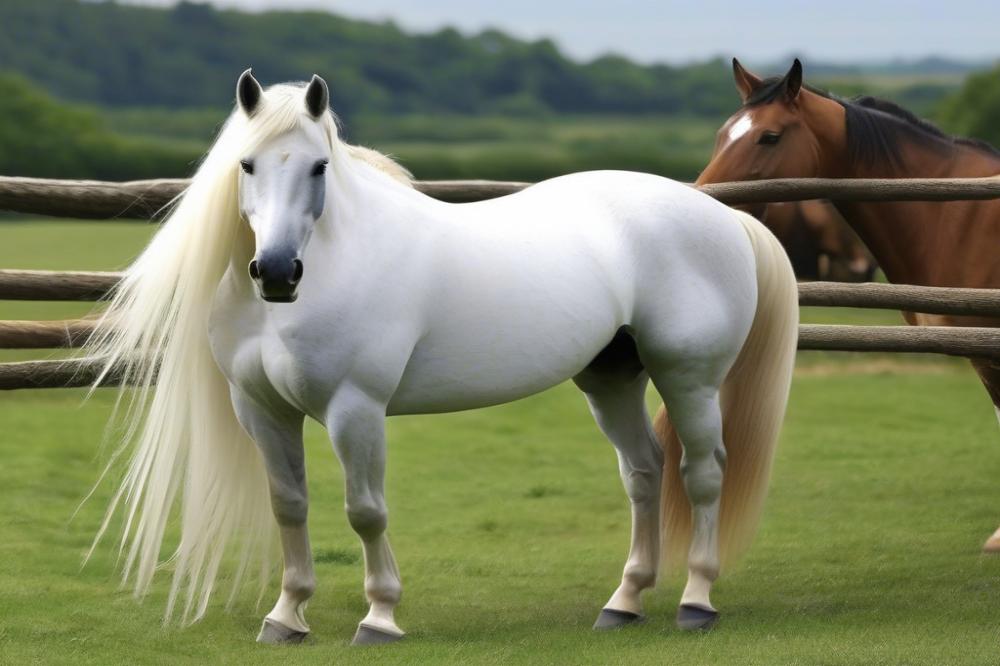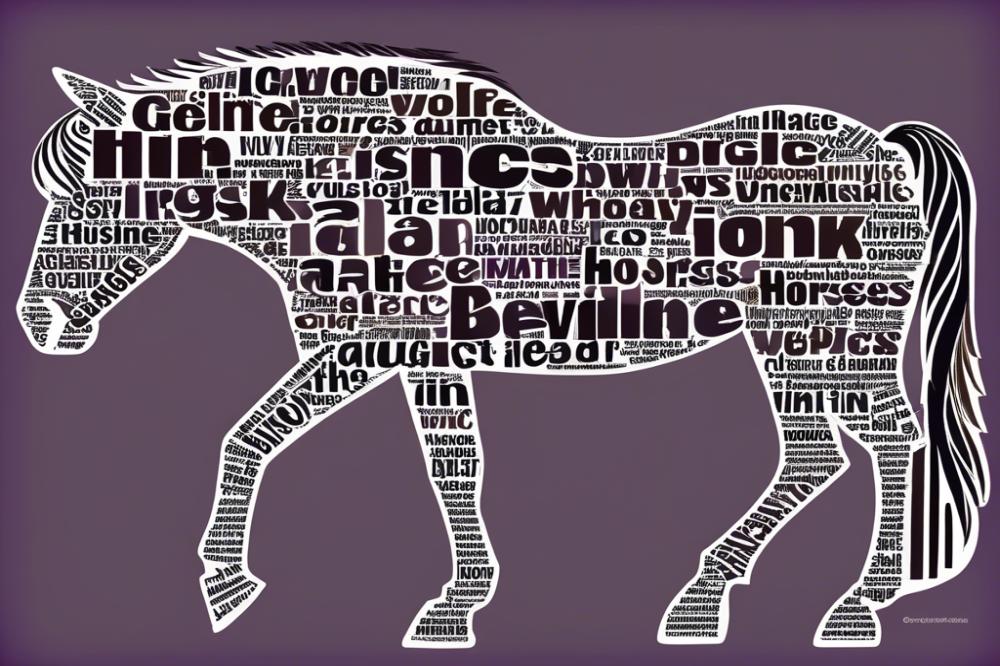Exploring Horse-Human Communication
Have you ever watched a horse in a field, its ears flicking back and forth, as if trying to catch every sound? This delightful creature communicates in ways that often baffle us humans. Building a bridge between horse behavior and our understanding is crucial for anyone involved in horse training. Moreover, recognizing how animals process information, much like us, sheds light on their intelligence. The bond between a person and a horse goes beyond the basic commands and responses; it digs deep into how we interpret their actions and reactions.
Recognizing what a horse understands can greatly enhance interactions in various settings, from stables to show rings. By grasping the nuances of animal cognition, we can develop better techniques for shaping a horse’s learning environment. When you take the time to observe, small details emerge. For instance, the way an Appaloosa with its unique coat patterns responds to a specific sound can tell you a lot about its emotional state. So, understanding horses gives us insight into their world and ours.
The Significance of Understanding Horse Intelligence

Why should we care about how much horses understand? At the end of the day, it’s about forming deeper connections. Imagine a conversation where both parties speak different languages. It’s a bit like debating whether a horse or a car is faster—one will always win, but the discussion itself can be enlightening. A horse’s ability to process cues can be surprisingly complex. These magnificent animals don’t just react; they often seem to think things through, even weighing their options much like we do when faced with a choice.
This exploration into what horses grasp helps us appreciate their perspectives. Many think horses are simply reactive, but there’s more beneath that beautiful exterior. Through patience and keen observation, trainers can uncover layers of comprehension. Each interaction can lead to tiny breakthroughs, whether it’s a simple nuzzle or a well-timed response. Just ask any seasoned rider—they might tell you they’ve had “light bulb” moments when their horse suddenly reacts in ways they’d never expect.
Goals of the Article

This article aims to dive into the fascinating world of horse language comprehension. By the end, you’ll see communication with these animals from a new angle. We will discuss various aspects of how horses engage with humans, emphasizing the skills that enhance horse training and the importance of understanding their mental processes. Let’s embark on this journey together, uncovering the layers of meaning in the everyday exchanges between these majestic beings and us.
Understanding Horse Communication

Forms of Communication in Horses
Horses have their own ways of expressing themselves. This goes beyond simply neighing and whinnying. When you look closely, you may notice that equine communication encompasses a variety of signals. Each gesture, flick of an ear, or swish of a tail sends a message. Their unique forms of expression can reveal how they feel or what they need. For example, a horse may stomp its foot to show annoyance. That’s like a teenager rolling their eyes when they disagree!
Body Language and Vocalizations
Observing body language is crucial in understanding horses. A relaxed horse may have its head low and ears forward, showing that it feels calm. However, if those ears pin back, you might be dealing with a horse that’s upset or wary. Vocalizations also play a role. Horses use sounds to communicate with each other. From snorts to whinnies, each sound tells a part of their story. During horse training, you should recognize these signals to respond appropriately.
The Role of Context in Understanding
Every good horse owner knows that context matters. A horse’s behavior can depend on the situation. If your horse appears spooked, it might be reacting to something new in the environment. Perhaps a plastic bag rustling in the wind is causing a stir! Understanding horses requires patience and careful observation. Remember, each horse has its own personality and experiences. What makes one horse jump may not even phase another. It’s like meeting different people; some are shy, while others are bold!
Using these insights about animal cognition, you can improve your bond with these magnificent creatures. Learning their language takes time but pays off immensely. With increased awareness, you can cultivate a deeper connection, leading to better horse behavior.
Equine Cognitive Abilities
Basic Cognitive Functions in Horses
Horses are known for their impressive cognitive functions. They have a keen ability to pick up on environmental cues. Observing how they navigate their surroundings showcases how much they understand. For instance, a horse can remember a trail it has traveled many times. This robust memory helps them avoid dangers and find their way back home.
Interestingly, equine communication plays a huge role in how they interact with each other and humans. You might notice how a horse reacts to different sounds and movements. They can often tell when you’re happy or frustrated just by observing your body language. Clear signals and consistent cues in horse training help them learn faster. It’s almost like they have their own language, even if they don’t understand words the way we do.
Memory and Learning Capabilities
Memory in horses is regarded as quite sophisticated. They can remember individuals, places, and even experiences. Imagine a horse that has been treated poorly; it might remember that experience for years. On the flip side, positive experiences can create strong bonds with humans. This is why training should always be gentle and positive. A horse that trusts you learns better and feels safe.
Learning occurs in many forms for these animals. They grasp commands and routines remarkably well. This is the basis for successful horse training programs. When a horse gets a treat for following a command, that’s positive reinforcement at work. Over time, the horse learns to associate your cues with rewards. It’s like they have their own version of “if I do this, I get that.”
Comparison with Other Animals
When comparing horse intelligence with other animals, a few things stand out. Many people think dogs are the smartest pets, likely because they respond very well to commands. However, horses exhibit a different kind of intelligence. They have a strong ability to adapt to their environment and form social structures. While dogs might listen closely to their owners, horses read the atmosphere around them, which makes them unique.
Using animal cognition as a measure, both species shine in their ways. While a dog might learn a trick quickly, a horse might remember where it last saw food. Each offers an insight into understanding horses and their distinct ways of thinking. Moreover, social interactions among horses resemble those of elephants. They build relationships and can even have best friends.
To sum it up, the world of equine intelligence is fascinating. Horses live in a complex social environment that underlines their cognitive skills. They may not understand words like we do, but their ability to learn and adapt is quite remarkable. They continue to surprise us with their capabilities, making them worthy companions in our lives.
Research on Horse Language Comprehension
Summary of Key Studies
Many researchers have looked into how horses understand words and phrases. One notable study examined how equine communication differs from other animals. Scientists wanted to explore if horses could pick up on specific cues during training. Surprisingly, results showed that these magnificent creatures can learn not just commands, but also associate various words with actions. Horse behavior can reveal much about their intelligence. Some breeds show a knack for picking up new words faster than others. It’s like having a furry student who aces the tests!
Findings on Word Recognition and Response
Researchers found that horses are quite adept at recognizing words. They respond to their names, training commands, and even certain phrases that they hear often. For example, when a rider says “walk” or “trot,” many horses immediately know what to do. This kind of response isn’t just luck; it reflects their understanding of consistent cues. Horses are not just following commands blindly—they seem to connect the dots. Imagine trying to explain a simple task to a friend; that’s how these animals process spoken language. Their comprehension shows a level of animal cognition that’s fascinating to watch in action.
Understanding Cues and Commands
Training a horse involves more than just repeating words. It’s about building a relationship based on trust and understanding. Horses thrive on consistency. If commands are given with the same tone and body language, they start to understand what’s expected of them. Cues can be sights, sounds, or even a gentle touch. This is where horse training becomes an art form. As riders work with their horses, they notice how slowly these animals catch on. With patience, a horse may learn to respond to the slightest hint. It’s like being in sync with a dance partner, where both know the routine without a word being said. In essence, understanding horses brings joy not just to the trainer, but to the horse itself.
Factors Affecting Comprehension
Age and Experience Factors
Horses, like humans, learn as they grow. A young foal might not grasp words immediately. Yet, with time, they can pick up on sounds and cues. An older horse often understands commands better because of past experiences. They have had more chances to learn, after all. It’s fascinating how age plays a role in animal cognition. Just like we understand more as we age, horses also develop their understanding of equine communication.
Training Methods and Their Impact
The way a horse is trained can change everything. Some trainers use harsh methods, while others focus on gentle practices. Gentle training methods, often built on trust, generally yield better results. Horses trained in a positive environment tend to respond well to words and cues. They learn to associate human sounds with actions, which enhances their behavior. Consistent training helps in creating a bond. This bond can lead to a better understanding of words over time.
Individual Differences Among Horses
Each horse has its own personality, and this shapes how they learn. Some horses are eager and curious, wanting to understand everything. Others might be more stubborn or anxious, making them less likely to respond to verbal cues. Just like people, horses have their quirks! A playful horse might catch on to commands faster than a shy one. This shows that animal intelligence is not one-size-fits-all. Understanding horses involves recognizing these individual differences as key factors in their comprehension.
Practical Implications for Horse Owners
Understanding horses can truly change the way we connect with them. When it comes to equine communication, being clear and consistent should be your main goal. Offering your horse clear cues can lead to a relationship filled with trust and respect. Just imagine how easier it would be to guide your horse if they understood your words! By choosing specific phrases for different commands, you can help your horse learn what you mean, making your time together more enjoyable.
Effective Communication Strategies
A horse responds to tone, body language, and context. For example, a calm voice during a ride can soothe a nervous horse. Changing your speed or volume can convey excitement or urgency, too. Have you ever noticed how a horse tilts its head when it hears something new? It’s like they’re saying, “What’s that?” Using clear signals will make your communication a lot smoother.
Training Techniques That Enhance Comprehension
When training your horse, keep it simple. Start with basic commands, allowing your equine friend to grasp what you want. Rewarding them with treats or praise can really boost their understanding. Horses are smart, and they realize that certain actions lead to good things. Every time your horse responds correctly, their learning increases. It’s like building blocks; you can create a strong foundation for better behavior over time.
Building Stronger Horse-Human Relationships
Establishing a bond takes patience and consistency. Think of it as a friendship built one day at a time. Some horse owners play games with their animals. This not only keeps training fun but also enhances your understanding of horse behavior. A playful approach can break the ice, making a nervous horse feel more relaxed. Sharing space and creating trust leads to deeper connections. You’ll find that both you and your horse can enjoy each other’s company even more.
Future Directions in Research
Potential areas for further study
More researchers are diving into horse intelligence. One fascinating area could be a deeper look at how horses process words. Studies could focus on their reaction to sounds and phrases. We might explore whether certain words trigger emotions or actions. Another interesting avenue could be examining how social contexts influence equine behavior. This could give us clues about their communication among herd members.
Importance of interdisciplinary approaches
Bringing together different fields can really enhance understanding horses. For instance, combining psychology with animal training can reveal much about animal cognition. Simply relying on one discipline limits what we can discover. By incorporating insights from ethology, linguistics, and even neuroscience, we can build a richer picture of equine communication. This teamwork can lead to better methods in training and care.
Implications for welfare and training
Properly understanding horses can improve their welfare significantly. When trainers know how equines understand commands, they can create more effective training techniques. This could reduce frustration for both horse and human alike. Imagine a world where horses are more engaged and willing! Additionally, better comprehension of their emotions and thoughts allows caretakers to address their needs more effectively. An approach that builds trust could lead to happier, healthier horses. In the end, it’s all about creating bonds that make both parties thrive.
Bringing It All Together
As we wrap up our journey into whether horses can understand words, let’s recap some key points. We’ve uncovered that a horse’s communication isn’t just limited to neighing and whinnying. Instead, we’ve learned about the importance of body language, especially those fascinating cues like horse ear movement. Their ears are like satellite dishes, picking up on human emotions and intentions. It’s quite remarkable!
Understanding how horses interpret our words has significant implications. This comprehension creates stronger bonds between horses and humans. Imagine having a conversation with your horse, even if it’s not verbal! The connection with our equine friends goes beyond simple commands; it’s about building trust and companionship. With patience and empathy, we can engage deeper with these beautiful creatures.
Let’s not forget about fun facts like “do jockeys wear protective vests?” They certainly do, showcasing the blend of safety and sport in horsemanship. So even in the midst of racing excitement, there’s a thoughtfulness that underscores our need to protect not just riders but also our equine pals.
In closing, keep your curiosity alive! The world of horses is full of mysteries waiting to be unraveled. Whether you’re a seasoned rider or a curious onlooker, take time to observe. Each interaction you have with a horse contributes to a greater understanding of these magnificent animals. Who knows? You might find yourself understanding the silent dialogues that happen every day in the barn!
So, next time you see a horse, ask yourself what it might be trying to say. And remember, just like a good story, there’s always more than meets the eye. Horses are not just animals; they’re teaching us about communication. How fascinating is that?



